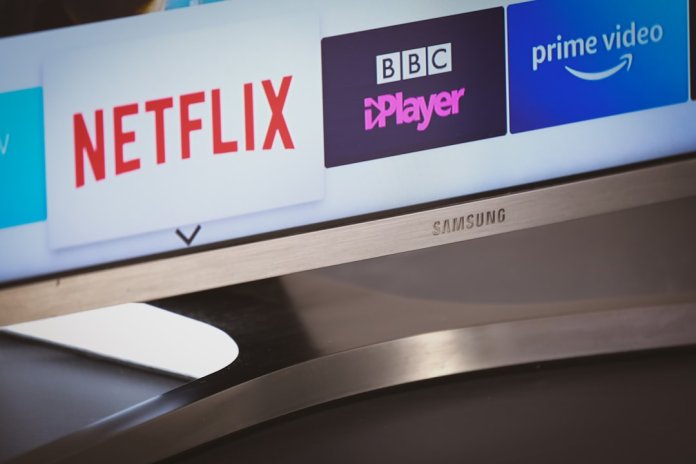As streaming devices become increasingly popular, convenience comes at a cost — and that cost might be your privacy. Whether you’re using a Roku, Amazon Fire TV, Apple TV, or Google Chromecast, it’s important to understand what personal data these devices collect, why they collect it, and how it’s used. Many users don’t realize their binge-watching habits, clicks, and even voice commands could be used to build a data profile. This article explores the intricacies of streaming device privacy and what you can do to protect yourself.
What Streaming Devices Are Collecting
Streaming devices don’t just deliver entertainment — they’re also sophisticated data-collection tools. Here’s a list of the most common types of data these gadgets gather:
- Viewing history: What shows or movies you watch and how long you watch them.
- Search activity: Search terms used when looking for content or navigating apps.
- Device usage data: How often the device is used, for how long, and at what times.
- Voice inputs: Voice commands are often sent to servers for processing — sometimes saved and reviewed.
- Location data: Some devices determine your location through IP addresses or Wi-Fi networks.
- App activity: Which apps are installed, opened, and interacted with.
- Advertising ID and device identifiers: Unique IDs used to track users across services and target ads.
Each one of these data points builds a clearer picture of your habits, preferences, and even your routine, which makes them incredibly valuable to advertisers and tech companies.

Who Is Collecting It and Why?
There are multiple parties interested in your streaming behavior:
- Device manufacturers: Companies like Roku, Amazon, and Apple collect data from the operating system to improve functionality, personalize content, or — most often — deliver targeted advertising.
- Streaming apps: Apps such as Netflix, Hulu, and YouTube collect data to personalize content recommendations and enhance user experience.
- Advertisers and third parties: Through tracking technologies and partnerships, third-party advertisers receive behavioral data to serve personalized ads both on and off the platform.
It’s not always clear when or how your data leaves the device and reaches external servers. What’s more worrying is that these data-sharing practices are often buried in privacy policies few people take time to read.
Case Studies: How Different Devices Handle Privacy
Streaming device privacy varies widely by brand. Here’s a quick breakdown of how data privacy is approached by major players:
Amazon Fire TV
Amazon uses data from Fire TV to improve Alexa functionality and tailor ads. If you’ve ever asked Fire TV a question via Alexa, your command might have been saved and reviewed by a human, unless you explicitly opted out. Voice input and browsing behavior can be used across Amazon’s ecosystem — from shopping insights to video suggestions.
Roku
Roku is known for its expansive ad network. It collects user activity across platforms and apps, often even if you’re not actively watching anything. Roku’s use of Automatic Content Recognition (ACR) allows it to identify content being played, including over-the-air broadcasts or content from devices connected via HDMI.
Apple TV
Apple brands itself as privacy-focused. It minimizes data sharing and often processes information on the device instead of transmitting it to the cloud. Furthermore, Apple requires apps to display specific privacy details before installation.
Google Chromecast
Given Google’s primary business is advertising, it’s no surprise that Chromecast shares behavioral data with Google’s advertising platforms. Even your YouTube watch history via Chromecast helps form a larger data profile linked to your Google Account.
Clearly, the level of data collection depends on the platform, but none are fully transparent or completely benign.
Image not found in postmetaThe Role of Automatic Content Recognition (ACR)
One of the most intrusive technologies in streaming devices is Automatic Content Recognition (ACR). ACR scans what’s on your screen — even from HDMI inputs, gaming consoles, or Blu-ray players — and reports that data back to the manufacturer or third parties. This helps fill in the blanks if you’re watching content that’s not part of a streaming ecosystem, giving companies a more complete profile of your interests and behaviors.
For example, even if you’re watching a DVD on a player connected to your smart TV, your device may recognize the title and record that you viewed it.
ACR is especially concerning because it operates in the background and is often enabled by default. The good news? Most devices let you disable ACR — though finding the toggle might be a challenge.
Can You Opt Out?
The answer is: kinda. While many platforms and apps allow you to limit tracking, the process is rarely user-friendly. Here are some basic steps you can take:
1. Adjust Device Settings
Most devices have a ‘Privacy’ section under their Settings menu. From there, you might be able to:
- Disable ACR
- Limit ad tracking (though this doesn’t stop ad collection completely)
- Delete voice recordings
2. Opt-Out of Targeted Ads
Manufacturers often include an option to restrict personalized ads. While this reduces profiling, it doesn’t completely stop companies from collecting your data.
3. Use Guest Network or VPN
If you’re tech-savvy, placing your streaming devices on a guest network or using a VPN can help limit the amount of personal data that gets funneled out of your home. However, not all devices support VPNs directly.
4. Avoid Voice Commands
Unless necessary, it might be safer to turn off voice assistant features and stick with manual navigation. Every voice interaction has potential to be saved and analyzed.
Unfortunately, to opt out of everything completely, you’d likely need to stop using “smart” streaming devices altogether. Short of that, the best you can do is limit the tracking where possible.
What Laws Are in Place?
There are a few privacy laws that offer some protection — but their coverage varies:
- GDPR (Europe): Requires express consent for data collection and the right to see what data is collected.
- CCPA (California): Gives users the right to know what information is collected and to opt out of its sale.
- Children’s Online Privacy Protection Act (COPPA): Prevents companies from collecting data from children under 13 without parental consent.
The problem? If you live outside these jurisdictions, you might not have the same rights. And even within them, enforcement can be inconsistent.
How to Stay Vigilant
Privacy awareness is your best defense. Here are a few suggestions to keep your digital entertainment experience as private as possible:
- Regularly review privacy settings across all your devices and apps.
- Use privacy-focused streaming devices when possible.
- Log out of apps when not in use.
- Read (or at least skim) privacy policies of your devices and apps to understand what you’re agreeing to.
Conclusion
Streaming devices have revolutionized how we consume content — but they’ve also introduced a new dimension of privacy concerns. While convenience and customization are the benefits, the trade-off is often your personal data being shared across companies and platforms without your full understanding or control.
Being informed and proactive is the key. Understand what’s being collected, take steps to reduce your digital fingerprint, and hold companies accountable for transparent practices. Privacy doesn’t have to be the price of convenience — but if we’re not careful, it just might be.
